What's New
Displaying results 1791 - 1800 of 4052
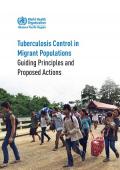
Resource | Guidelines,
MDR-TB is essentially a human-made problem that develops because of low-quality drugs and/or inadequate treatment regimens, and it is difficult and expensive to treat. The development of migrant-sensitive TB control policies is especially critical given the high mobility of migrants—which increases the likelihood of transmission and treatment default, their lack of access to health-care services, their often dire living conditions and their propensity to inadequately self-treat in the private sector. In formulating such policies, however, policy-makers should note that TB is primarily transmitted within migrant communities, with very limited evidence of transmission from migrant groups into host country populations.
This consensus-based document offers a direction for countries to gradually move towards, subject to their existing national laws and regulations. It is the product of a regional consultation of health and immigration officials from 13 Western Pacific Member States conducted 26–27 March 2013 in Manila, 12 of which endorsed the document. One Member State, while recognizing the importance of addressing TB control in migrants, withheld its support until a broader regional consensus on migrant health is reached.

Resource | Publications,
PEPFAR Technical Considerations for COP/ROP 2016 were released at the beginning of February 2016. Within the document, PEPFAR reiterates its endorsement of the UNAIDS Fast-Track 90-90-90 targets for 2020 and highlights the importance of implementing collaborative TB/HIV activities as key to achieving these targets. It urges PEPFAR teams to ensure universal ART coverage (100%) for HIV-infected TB patients, through the support of integrated models of HIV/TB care to detect HIV-associated TB and provide ART in TB clinics. It further points out that viral suppression is only achievable if people living with HIV are alive, on ART, and virally suppressed. If PLHIV become ill and die of TB, the question of viral suppression becomes irrelevant. Furthermore, TB is known to worsen HIV progression and thereby leads to higher viral load. Hence the scale-up of TB screening and TB case-finding, IPT and TB infection control are key to contributing to long-term viral suppression for PLHIV on ART.
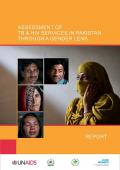
Resource | Publications,
The gender assessment was planned to identify gaps in TB and HIV services, which will be shared with relevant stakeholders for further policy level integration into overall health framework and vision. This will assist both programs to assess HIV and TB care context and response from a gender perspective, and help in shaping response from gender lens to reduce the dual burden of HIV and TB infection.

Resource | Infographics,
The term long-acting ARV injectable refers to an antiretroviral drug that is delivered via an injection and persists in the body for an extended period of time.
This infographic details the process for developing long-acting injectables for PrEP and treatment.

Resource | Infographics,
While scaling up access to all treatment and prevention options that currently exist is essential, it is not sufficient. There remains a critical need for additional options. In addition to the introduction of oral-TDF based PrEP and the open-lable extension studies of the vaginal dapivirine ring, there are a number of efficacy trials planned or underway. They're tackling virtually every intervention—from next-generation PrEP in the form of F/TAF, a drug that will soon be tested for efficacy as daily oral PrEP, to long-acting injectables, vaccines and antibody-mediated prevention.
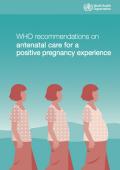
Resource | Guidelines,
Endorsed, by the UN Secretary-General, this is a comprehensive WHO guideline on routine ANC for pregnant women and adolescent girls. It aims to complement existing WHO guidelines on the management of specific pregnancy-related complications. The guidance aims to capture the complex nature of the issues surrounding ANC health care practices and delivery, and to prioritize person-centred health and well-being, not only the prevention of death and morbidity, in accordance with a human rights-based approach.
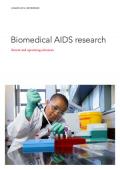
Resource | Publications,
Scientific evidence is essential for policies and programmes to advance the vision of UNAIDS of zero HIV infections, zero discrimination and zero AIDS-related deaths. New scientific information is becoming available at a rapid pace, and many of the findings are potentially important to guide future action against AIDS. To ensure this, UNAIDS has access to the latest scientific developments; a UNAIDS Scientific Expert Panel was established to advise UNAIDS on major new scientific discoveries and research evidence as well as research gaps and strategic AIDS research needs. The Scientific Expert Panel comprises more than 40 scientists from around the world with expertise in a wide range of disciplines, including epidemiology, behavioural science, virology, diagnostics, pathogenesis, immunology, treatment, prevention and cure.
This 2016 report, in its second year of publication, captures the key advances in biomedical science on HIV during 2015 and provides a glimpse of the new research that can be anticipated in 2016.

Resource | Data Sheets,
Regional progress and country profiles on hepatitis B vaccination coverage and hepatitis B prevalence.
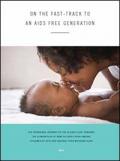
Resource | Publications,
The Global Plan towards the elimination of new HIV infections among children by 2015 and keeping their mothers alive (Global Plan) was launched in June 2011. It prioritizes the 22 countries that, in 2009, accounted for 90% of the global number of pregnant women living with HIV who were in need of services to prevent mother-to-child transmission of HIV. This report summarizes the history and development of the Global Plan, its achievements in reaching ambitious goals, lessons learned and directions for future progress to end new HIV infections among children.
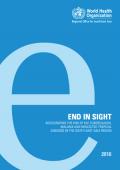
Resource | Publications,
Communicable diseases such as HIV, TB and malaria remain among the leading causes of illness, death and impoverishment in our region, and infection levels continue to rise in many settings and populations. Unless focused efforts are undertaken to build on the gains to date, communities that remain vulnerable to neglected tropical diseases such as leprosy, kala-azar and filariasis will continue to be left behind. This report focuses on the historic opportunity for the WHO South-East Asia Region to end the scourge of communicable diseases for good.





